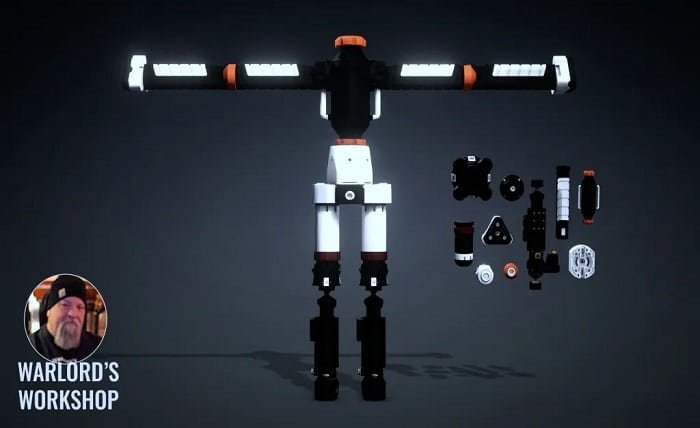The windmill, a seemingly simple machine, holds profound symbolism in various contexts, including Marxism, technology, and capitalism. In literature, particularly in George Orwell’s “Animal Farm,” the windmill is a powerful symbol that encapsulates the complexities of revolutionary ideals, technological advancements, and capitalist critiques. This blog post delves into the multifaceted symbolism of the windmill and its implications for understanding Marxism, technological progress, and capitalist systems.
The Windmill as a Symbol in Marxism
In Marxist theory, the windmill symbolizes the promise of a utopian society achieved through revolutionary change. In George Orwell’s “Animal Farm,” the construction of the windmill represents the animals’ aspirations for a better world free from human oppression. The windmill embodies the Marxist ideal of collective labor leading to a just society, where the fruits of labor are shared equitably among all members of the community.
The Windmill and the Technological Revolution
The windmill also symbolizes technological revolution and progress. In the context of “Animal Farm,” the windmill is introduced as a technological advancement intended to improve the animals’ lives by increasing productivity and easing their workload. This reflects the broader narrative of how technological innovations, while promising progress and efficiency, can sometimes lead to unforeseen consequences or exploitation, particularly within a capitalist framework.
The Windmill’s Role in Capitalism
In capitalist contexts, the windmill represents the exploitation and alienation inherent in capitalist systems. As the windmill in “Animal Farm” progresses, it becomes a symbol of the increasing demands placed on the working class. The animals’ hard labor to build and maintain the windmill parallels the capitalist exploitation of workers, where the benefits of technological advancements often accrue to those in power rather than the laborers themselves.
The Windmill and Revolutionary Ideas
The symbolism of the windmill extends to the ideals of revolution and how they can be corrupted. In “Animal Farm,” the initial vision of the windmill as a tool for liberation becomes tainted by the pigs’ increasing authoritarianism. The windmill, once a symbol of collective hope and revolutionary change, transforms into a representation of the betrayal of revolutionary ideals. This shift highlights the potential for revolutionary movements to deviate from their original goals and become oppressive regimes.
The Windmill and Technological Optimism
Technological optimism is another aspect reflected in the symbolism of the windmill. Initially, the windmill represents the hope that technological progress will lead to a better and more prosperous life. However, as the story progresses, the windmill becomes a symbol of disillusionment. The gap between the promised benefits of technological advancements and the harsh realities faced by the working class underscores the limitations of technological optimism within a flawed system.
The Windmill as a Critique of Ideological Purity
The windmill also symbolizes the critique of ideological purity and the challenges of maintaining a consistent vision. In “Animal Farm,” the windmill project becomes a tool for the pigs to manipulate and control the other animals. The shifting justifications for the windmill’s failure and the constant changes to the original plan reflect the difficulties of adhering to ideological purity in the face of practical challenges and power struggles.
The Windmill and Class Struggle
Class struggle is a central theme in Marxist theory, and the windmill serves as a symbol of this ongoing conflict. In “Animal Farm,” the windmill represents the efforts of the working class to improve their conditions and achieve a more equitable society. However, the eventual exploitation of this effort by the ruling pigs highlights the persistence of class struggle and the challenges faced by the working class in achieving true equality.
The Windmill and the Illusion of Progress
The windmill also embodies the illusion of progress. While it initially symbolizes hope and improvement, its eventual collapse and the harsh conditions faced by the animals reveal the disparity between appearance and reality. The windmill’s failure serves as a critique of superficial progress and how technological and revolutionary advancements can be undermined by deeper systemic issues.
The Windmill in Historical Context
Examining the windmill’s symbolism in a historical context provides additional insights into its significance. The windmill can be seen as a metaphor for historical events such as the Industrial Revolution and the rise of capitalist economies. The struggles faced by the animals in building and maintaining the windmill mirror the experiences of workers during these periods, highlighting the tensions between technological advancement and capitalist exploitation.
The Windmill as a Metaphor for Human Ambition
Finally, the windmill serves as a metaphor for human ambition and the pursuit of lofty goals. The construction of the windmill in “Animal Farm” reflects the animals’ aspirations for a better life and their willingness to work towards a grand vision. However, the eventual disillusionment with the windmill’s outcome underscores the complexities of ambition and the challenges of achieving one’s ideals in a flawed system.
Conclusion
The windmill in “Animal Farm” is a rich symbol that encapsulates various themes related to Marxism, technology, and capitalism. It represents the promise and pitfalls of revolutionary ideals, the complexities of technological progress, and the exploitation inherent in capitalist systems. By examining the windmill’s symbolism, we gain a deeper understanding of how these concepts intersect and the challenges faced by those striving for a better world. The windmill serves as a powerful reminder of the need for critical reflection and vigilance in the pursuit of ideological and technological advancements.
FAQ
1. What does the windmill symbolize in Marxism?
In Marxism, the windmill symbolizes the promise of a utopian society achieved through collective labor and revolutionary change. It represents the ideal of a just society where the benefits of labor are shared equally.
2. How does the windmill relate to the technological revolution?
The windmill symbolizes technological progress and innovation, reflecting the hope that such advancements will improve productivity and ease labor. However, it also highlights the potential for technological progress to lead to exploitation and unforeseen consequences.
3. What role does the windmill play in the critique of capitalism?
In capitalist contexts, the windmill represents the exploitation and alienation of workers. The hard labor required to build and maintain the windmill mirrors the capitalist exploitation of labor, where technological advancements often benefit those in power rather than the workers.
4. How does the windmill reflect revolutionary ideals in “Animal Farm”?
In “Animal Farm,” the windmill initially symbolizes the animals’ revolutionary aspirations for a better world. However, it eventually becomes a symbol of the betrayal of these ideals as the pigs’ leadership becomes increasingly authoritarian.
5. What does the windmill symbolize about human ambition?
The windmill symbolizes human ambition and the pursuit of grand goals. It reflects the animals’ aspirations for a better life and their willingness to work towards a vision. However, its eventual failure underscores the complexities of ambition and the challenges of achieving ideals in a flawed system.





